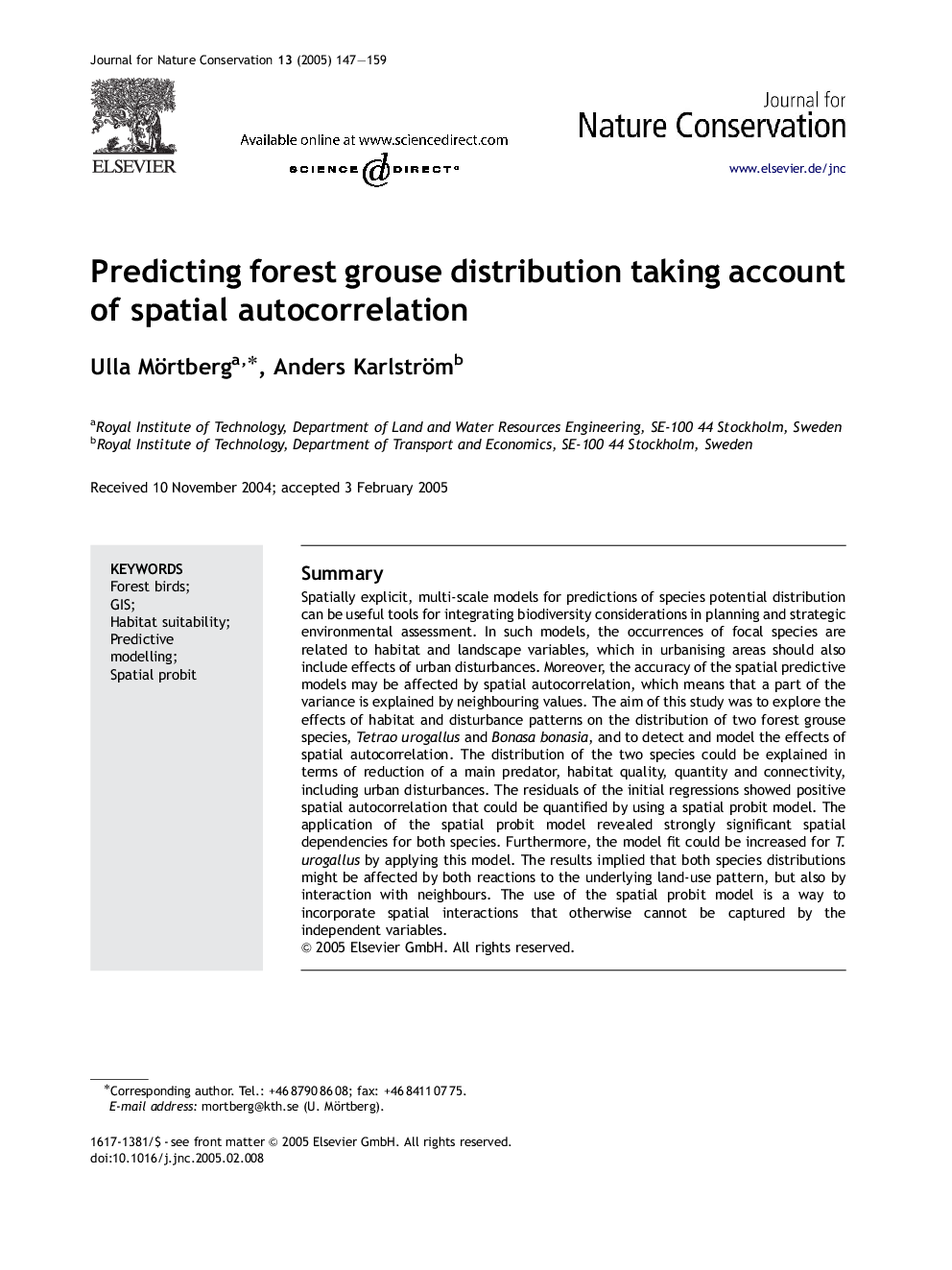| Article ID | Journal | Published Year | Pages | File Type |
|---|---|---|---|---|
| 9450522 | Journal for Nature Conservation | 2005 | 13 Pages |
Abstract
Spatially explicit, multi-scale models for predictions of species potential distribution can be useful tools for integrating biodiversity considerations in planning and strategic environmental assessment. In such models, the occurrences of focal species are related to habitat and landscape variables, which in urbanising areas should also include effects of urban disturbances. Moreover, the accuracy of the spatial predictive models may be affected by spatial autocorrelation, which means that a part of the variance is explained by neighbouring values. The aim of this study was to explore the effects of habitat and disturbance patterns on the distribution of two forest grouse species, Tetrao urogallus and Bonasa bonasia, and to detect and model the effects of spatial autocorrelation. The distribution of the two species could be explained in terms of reduction of a main predator, habitat quality, quantity and connectivity, including urban disturbances. The residuals of the initial regressions showed positive spatial autocorrelation that could be quantified by using a spatial probit model. The application of the spatial probit model revealed strongly significant spatial dependencies for both species. Furthermore, the model fit could be increased for T. urogallus by applying this model. The results implied that both species distributions might be affected by both reactions to the underlying land-use pattern, but also by interaction with neighbours. The use of the spatial probit model is a way to incorporate spatial interactions that otherwise cannot be captured by the independent variables.
Related Topics
Physical Sciences and Engineering
Earth and Planetary Sciences
Earth and Planetary Sciences (General)
Authors
Ulla Mörtberg, Anders Karlström,
